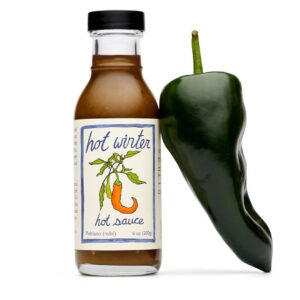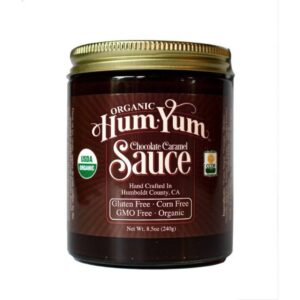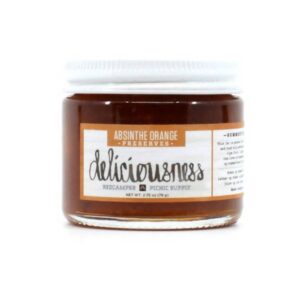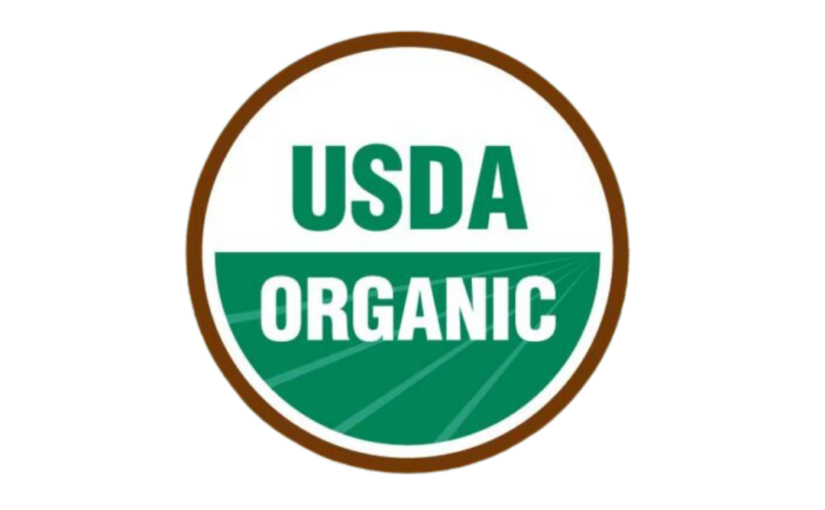Why does Certified Organic Mean?
We’ve often said that USDA Certified Organic is “the strictest organic standard in the world.” That means there is a lot to this little seal. Because so much goes into it, we highlight four essential qualities right on our package: no antibiotics, synthetic hormones, toxic pesticides, or GMOs.
But have you ever wondered what else goes into organic and why it matters to you? Let’s dig a little deeper.
USDA Organic is an Act of Congress
It’s a fundamental law. There are federal regulations that must be met for anything to carry the USDA Organic seal. In fact, other countries can’t sell organic-labeled foods in the U.S. unless they meet our standards or organic equivalency arrangements (Canada and EU).
Organic entities (farms, processing plants, brands, etc.) are audited by a third-party certifier every year. Certifiers are independent organizations accredited by the USDA National Organic Program (NOP) to conduct unbiased organic inspections.
Becoming organic is voluntary—no one is required to do it. But if someone chooses to, they must follow the rules to market and sell their products as organic. It is a law, after all. The farm or company will lose its organic certification if it violates the standards, which would be a substantial financial loss on its own. Still, they may also be subject to fines or lawsuits.
USDA Organic is founded on federal law—the Organic Foods Production Act of 1990—making the label significant and differentiating it from other labels. Organic has three layers of oversight. The Office of the Inspector General oversees the National Organic Program (NOP), the NOP oversees and audits the certifiers. Certifiers audit the organic farms and businesses. No other food labeling program has this many checks and balances.
Non-GMO and humane labels are based on standards developed by the certifying organization and usually oversee themselves. They may not include third-party verification. That’s not to say these labels aren’t trustworthy—many are—but too many people assume they mean more than they do.
Non-GMO and natural can still mean pesticides were used. Humane could still mean animals ate GMO feed or were confined, as long as they aren’t mistreated.
Organic Applies to Every Step: Farm to Shelf
Every step in the organic food chain must be certified organic—farms, handlers, and processing plants. In comparison, “natural” only addresses how the product is handled during processing. It doesn’t say anything about how the animals were treated during their lifetime or if they ate feed grown with chemical pesticides and herbicides.
Added ingredients need to be organic too, but sometimes organic options aren’t available in sufficient quantities (or don’t exist). An example would be vitamins and minerals that are required by the FDA to be added to milk. To address this need, the NOP has an official list of allowed non-organic ingredients.
The National Organic Standards Board (NOSB) meets twice a year to review the list and make recommendations for changes based on advancements in farming and food science. Organic is all about continual improvement!
Outdoor Access and Grazing Pasture
All organic animals must have access to an outdoor space that is organic (not treated with herbicides or any other banned substances). Each species may spend different amounts of time outside, though. For instance, cows are big animals with multiple stomachs that act like big internal space heaters. They can be outdoors in wetter or colder weather than would be healthy for a chicken or pig. The farmers who care for the animals determine if the weather is safe for their animals to be outdoors.
In addition to unrestricted outdoor access, the Pasture Rule in the National Organic Program applies to beef and dairy cows. The Pasture Rule says that cows must get 30% of their diet from pasture for 120 days during the grazing season.
No Antibiotics: The Power of Prevention
Antibiotics are not allowed in organic production, but organic farmers absolutely do not allow their animals to suffer.
Like with people, sometimes all an animal needs to get better is extra nutrition, fluids, fresh air, rest, and quiet. Organic farmers will use natural and homeopathic options for minor illnesses to help boost the animal’s immune system naturally, similar to how ginger, echinacea, and garlic can help us humans feel better when we’re sick. We’ve also seen success with chiropractic and acupuncture for cows!
We really believe in the power of prevention. When animals are allowed to live their lives according to nature and their instincts, the results are overwhelmingly positive. After transitioning, especially when pasture is added, organic farms in our cooperative have frequently reported much less illness in their herds. Plus, our farms have biosecurity procedures to prevent the spread of diseases. Prevention is key.
But sometimes—again, just like with people—prevention or giving an illness time to run its course just doesn’t work, or it’s something more serious that should be treated immediately. In those rare cases, organic farmers are required to use antibiotics. When they do, that animal loses its organic certification and must be removed from the organic herd, which means it might be moved to a non-organic pack on the same farm, sold to a neighbor, or taken to an auction.
No Toxic Pesticides or Herbicides
Organic farmers are never allowed to use synthetic pesticides and herbicides like glyphosate (aka Roundup), 2,4-D, dicamba, chlorpyrifos, and many others.
Organic farmers do, however, have a toolbox of organic-approved weed and pest control options and tactics. Most pests and weeds aren’t actually problematic on a healthy organic farm. But if it gets to a point where the weeds or pests are harming crops and animals, then the farmer must take action.
The first step is to manage the farm in ways that reduce the need for chemicals. Rotating crops keep the soil healthy (which also confuses pests when they return next year, and the food they love isn’t there anymore [insert wicked laughter]). Soil tests tell a farmer to add organic-approved nutrients to a field to make it healthier. Organic farmers may also plant smaller plots of different crops next to one another and keep some land in a natural state or create a habitat for beneficial pest-controlling animals and bugs (like bats, birds, and predatory insects).
Suppose pests or weeds are still a problem. In that case, a farmer can refer to the National Organic Program’s list of approved substances to see what other options they have and get approval from their organic certifier. They might be able to tackle the stubborn weed or pest with a naturally derived spray or powder, such as soaps, hot pepper sprays, or diatomaceous earth. Most substances on the approved list also have restricted uses, like not near animals or only as a last resort. Even if a spray is naturally derived, a farmer still needs to use it with care.
No GMOs
“GMO” is short for “genetically modified organism,” which is also the same as “genetically engineered” or “GE.” GMO crops are made by inserting a gene from an unrelated species, such as a bacterium, into a plant to cause a particular trait.
For instance, GMO Bt corn was made by inserting a gene from bacteria that produces its own pesticide into the corn, causing the plant to be poisonous to certain pests. “Roundup Ready” crops are made so they can be sprayed with glyphosate herbicide, and the weeds will die, but the harvest won’t.
GMOs are strictly prohibited on organic farms, and that includes seeds and cloned animals. GMO ingredients also cannot be used in organic foods for any reason. As the image above says, “Organic is Always Non-GMO,” plain and simple.
“But what about drift?” you ask? Organic farmers can’t control where pollen from GMO plants blows, but they have many tactics to prevent GMO contamination.
Farms with non-organic neighbors can prevent cross-contamination by staggering their crop planting dates or using different varieties to pollinate at other times. Organic farms also must have buffer strips between their farms and non-organic neighbors.
Fascinating is emerging research around breeding new varieties of organic corn that won’t even accept the pollen of GMO corn. This would be a game-changer for organic farms once the seeds are widely available! The researchers use traditional cross-breeding practices to develop these varieties, not GMO technology, so the new types can be used in certified organic farming.
All of this—and so much more—is happening behind the scenes to bring you what you expect when you see that green USDA Organic seal!
Here are some of our favorite Certified Organic Products

Bon AppeSweet took their “Better Than Milk Chocolate” bar and added almonds! It’s high in healthy cacao, but tastes just like milk chocolate, but better! So good, you won’t believe it’s made with organic cacao, organic dates and organic almonds!

Hot Winters Poblano Hot Sauce is a “warm” sauce with lots of smokey, green chile flavor, a pleasant tanginess, and just a touch of heat. Perfect for those who don’t usually like hot sauce (and also a wonderful dipping sauce for those who do). Pairs especially well with fried plantains.

HumYum’s Chocolate Sauce is perfect for you if you love chocolate and caramel. Have the richness of hot fudge without the nasty ingredients. You will want to put it on everything. EVERYTHING. Need a pick me up? Add this and make the most satisfying mocha.
Prevail Jerky’s Umami Beef Jerky is not your mommy’s Teriyaki. We use coconut aminos made from aged coconut sap to help create this uniquely alluring flavor. The five basic flavor profiles are sweet, salty, sour, bitter, and umami. This flavor helps achieve taste utopia all in one bite. Umami Jerky for breakfast? We won’t judge.

Rawmio’s Superfood Spread’s journey begins with a base of the finest raw almonds, cashews and hemp seeds stone-ground to perfection. Sprouted chia seeds, goji berries, and a pinch of Himalayan salt are added for a potent boost of superfood nutrition. Nourish your body while enlightening your taste buds with the perfect combination of powerful nutrition, sultry texture, and decadent taste. Dig in and bliss out!
Raaka uses whole oats and coconut to create a vegan milk style chocolate reminiscent of an oatmeal cookie with maple sugar.
Peak and Valley’s Neuroscientist-formulated sleep restoration blend.
Get the restorative sleep that your body needs; This blend works to improve sleep quality and duration while reducing overall stress levels to improve long term sleep performance. Empower your body’s natural ability to heal during sleep to strengthen cognition, energy, and immunity during the day. Add 1 tsp to coffee, milk, or tea.

Use Wander Foods’ all purpose chili oil for dipping, drizzling, marinading, or just adding that “WOW!” factor to any dish. It can stand alone or be used to create a multi-dimensional flavor. This hot chili sauce packs a kick*ss punch- spicy, tangy, savory, and smooth at the same dang time!



